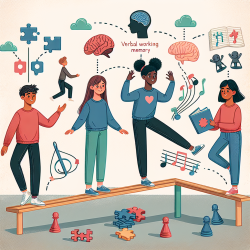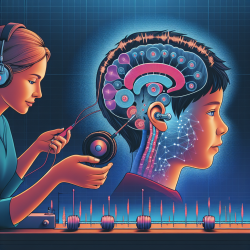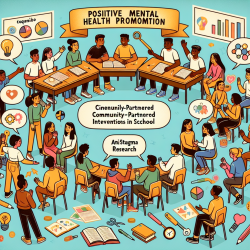Enhancing Dyslexia Interventions with Verbal Working Memory-Balance Programs

In the evolving field of special education, practitioners are continually seeking effective interventions for students with dyslexia. A recent study titled "Evaluating a new verbal working memory-balance program: a double-blind, randomized controlled trial study on Iranian children with dyslexia" provides promising insights. The study suggests that combining verbal working memory (VWM) training with balance exercises can significantly enhance reading skills and postural control in children with dyslexia.
Key Findings
The study compared the effectiveness of a traditional VWM program with a new Verbal Working Memory-Balance (VWM-B) program. Here are the notable outcomes:
- Children who participated in the VWM-B program showed superior improvement in verbal working memory capacity compared to those in the traditional VWM program.
- Participants in the VWM-B program demonstrated enhanced reading skills, including better word reading, non-word reading, and text comprehension.
- The VWM-B program also led to significant improvements in postural control, indicating better balance and stability.
Implementing the VWM-B Program
For practitioners interested in integrating these findings into their interventions, here are some practical steps:
- Incorporate Dual-Task Training: Design activities that require children to engage in verbal working memory tasks while simultaneously performing balance exercises. This could involve using balance boards or other stability equipment while practicing reading or memory tasks.
- Focus on Automatization: Ensure that the balance exercises become second nature to the students, freeing up cognitive resources for verbal tasks. This aligns with the cerebellar deficit theory, which posits that difficulties in automatizing skills contribute to dyslexia.
- Customize Training Intensity: Tailor the difficulty of both verbal and balance tasks to the individual needs of each student. Gradually increase the complexity to continuously challenge and improve their abilities.
Encouraging Further Research
While the VWM-B program shows great promise, continued research is essential to refine and optimize these interventions. Practitioners are encouraged to:
- Conduct longitudinal studies to assess the long-term benefits of the VWM-B program.
- Explore the neural mechanisms underlying the observed improvements using neuroimaging techniques.
- Investigate the applicability of the VWM-B program across diverse populations and educational settings.
Conclusion
The integration of verbal working memory training with balance exercises offers a novel and effective approach to supporting children with dyslexia. By adopting and further researching these methods, practitioners can enhance their interventions and contribute to the broader understanding of dyslexia treatment.To read the original research paper, please follow this link:
Evaluating a new verbal working memory-balance program: a double-blind, randomized controlled trial study on Iranian children with dyslexia.
Citation: Ramezani, M., Behzadipour, S., Pourghayoomi, E., Joghataei, M. T., Shirazi, E., & Fawcett, A. J. (2021). Evaluating a new verbal working memory-balance program: a double-blind, randomized controlled trial study on Iranian children with dyslexia. BMC Neuroscience, 22(55). https://doi.org/10.1186/s12868-021-00660-1










